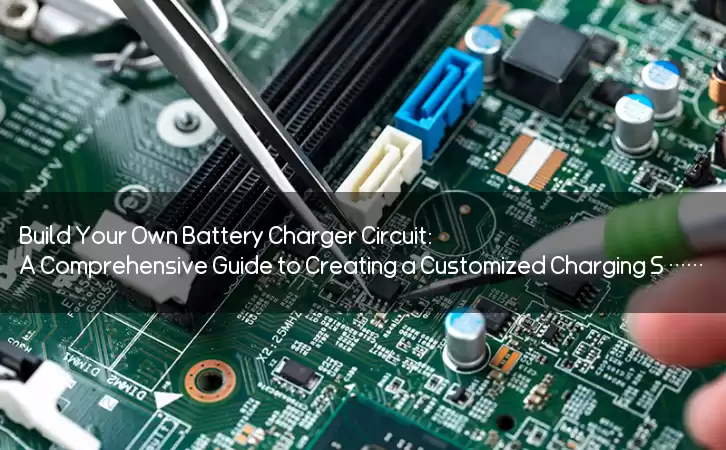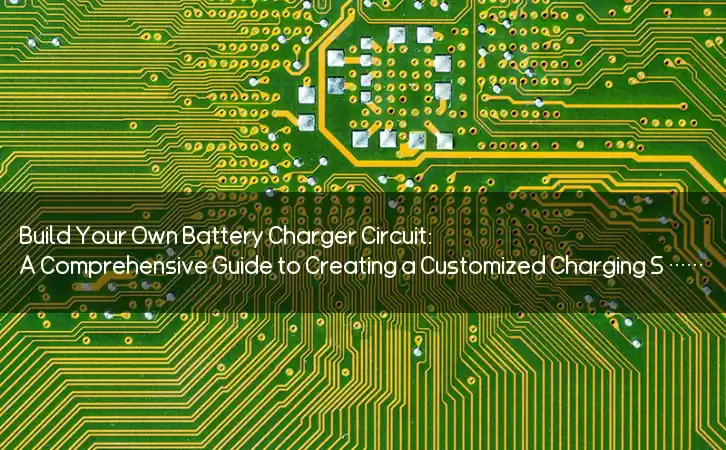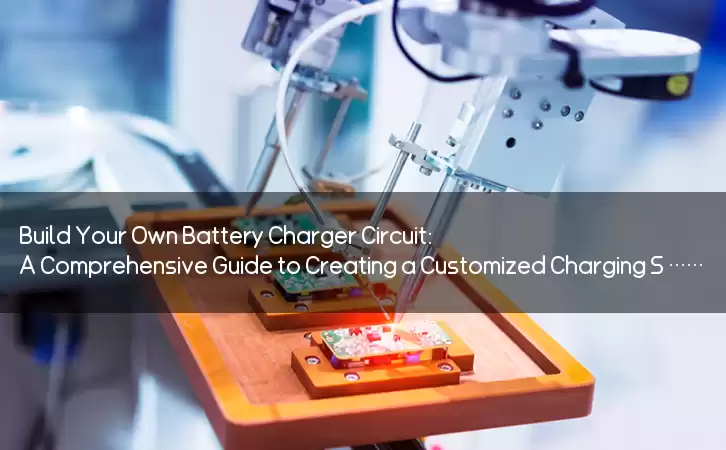Information Center
Build Your Own Battery Charger Circuit: A Comprehensive Guide to Creating a Customized Charging Solution
Published:2023-08-16 00:34:19 Author:Green WCND Views:95Battery Charger Circuit: A Guide to Building Your Own

A battery charger circuit is an electronic circuit that is used to charge rechargeable batteries. Rechargeable batteries, also known as secondary cells, come in many different types, including nickel-cadmium (Ni-Cd), nickel-metal hydride (Ni-MH), and lithium-ion (Li-ion).

Building your own battery charger circuit can be a rewarding experience, and there are many different designs and approaches you can take, depending on your specific needs and requirements.

In this article, we will provide an overview of some of the key components and considerations that go into building a battery charger circuit, as well as a step-by-step guide to building a basic circuit.
Components of a Battery Charger Circuit
There are a number of key components that make up a battery charger circuit, including:
1. Voltage regulator: A voltage regulator is used to regulate the output voltage of the charger circuit. This ensures that the battery is not overcharged or undercharged, which can damage the battery or reduce its lifespan.
2. Transformer: A transformer is used to step down the AC voltage from the mains power supply to a safe and usable voltage level for the charger circuit.
3. Rectifier: A rectifier is used to convert the AC voltage from the transformer to DC voltage, which is then used to charge the battery.
4. Capacitor: A capacitor is used to smooth out any fluctuations in voltage that may occur during the charging process.
5. Diode: A diode is used to prevent the battery from discharging back into the charger circuit when the charging process is complete.
Considerations When Building a Battery Charger Circuit
When building your own battery charger circuit, there are a number of key considerations you will need to take into account, including:
1. Battery chemistry: Different types of batteries require different charging methods and voltages. Make sure you understand the requirements of the type of battery you are charging before you begin building your circuit.
2. Charging rate: The charging rate of a battery refers to the amount of current that the battery can safely accept during the charging process. Make sure you choose a charging rate that is within the safe limits of the battery.
3. Charging time: The charging time of a battery refers to the amount of time it takes to fully charge the battery. Make sure you choose a charging time that is appropriate for your needs.
Step-by-Step Guide to Building a Basic Battery Charger Circuit
Now that we have covered some of the key components and considerations of a battery charger circuit, let’s take a look at a step-by-step guide to building a basic circuit.
Step 1: Gather materials
To build a basic battery charger circuit, you will need the following materials:
- Voltage regulator (LM317) - Transformer - Rectifier (bridge rectifier) - Capacitor - Diode - Resistor - LED - Battery holder
Step 2: Connect the voltage regulator
Connect the LM317 voltage regulator to a heatsink, and connect the input pin to the transformer, the output pin to the positive terminal of the battery holder, and the adjustment pin to a resistor and capacitor.
Step 3: Connect the transformer
Connect the transformer to the primary winding of the bridge rectifier, and connect the secondary winding to the input pin of the voltage regulator.
Step 4: Connect the rectifier
Connect the output of the bridge rectifier to the capacitor, and connect the negative terminal of the capacitor to the negative terminal of the battery holder.
Step 5: Connect the diode
Connect the diode between the positive terminal of the capacitor and the positive terminal of the battery holder.
Step 6: Connect the LED
Connect the LED to the positive terminal of the battery holder, via a resistor.
Step 7: Test the circuit
Test the circuit by connecting a battery to the battery holder. The LED should light up when the battery is charging, and go out when the battery is fully charged.
In conclusion, building your own battery charger circuit can be a rewarding and educational experience. By understanding the key components and considerations of a battery charger circuit, and following a step-by-step guide, you can build a basic circuit that will allow you to charge rechargeable batteries safely and effectively.
Power Adapter Design and Customization Guide for Portable Electric KettlesI. Common Design Types for Portable Electric Kettle Power AdaptersPortable electric ke···
I. Common Design Types of Power Adapters External Independent Type (Most Common) Design: A standalone adapter (e.g., "black brick") connected to the p···
Handheld Vacuum Cleaner Power Adapter Selection GuideIntroductionHandheld vacuum cleaners have become a mainstream tool for household cleaning due to their port···
Drill Power Adapter Selection Guide.drill-container { font-family: Arial, sans-serif; line-height: 1.6; max-width: 800px; margin: 0 auto; padding: 20px; } .dril···





